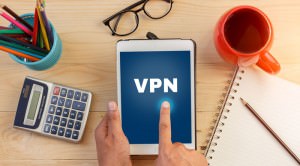Since it’s the 21st century, technology is advancing at an alarming rate and all that jazz, it takes some time and effort to stay up-to-date with all the technological doodads that are developed on a daily basis. Mobile Virtual Private Networks (mVPNs) are this neat little invention that gives mobile devices access to the resources and software applications on their home network when they connect via other wireless or wired networks.
You know what they say: “You can’t take it with you.” Well, now you actually can. Think of it like this – you’re out on the road with nothing but your phone in your holster and you realize that you suddenly need access to a document that’s stored on your computer at home or at work. Thanks to the wonders of commercialization and the mass production of technology, you probably have a smartphone, which isn’t really a phone but more of a small computer you can carry around in your pocket. With this small computer and thanks to mVPNs, you can securely connect to your home LAN or company network over a VPN connection.

Mobile VPNs are most commonly used in environments where workers are required to keep application sessions open at all times throughout the working day, as they connect through various wireless networks, encounter gaps in coverage, as well as suspend-and-resume their device in order to preserve their battery life. A standard VPN cannot survive such events, as the network tunnel is constantly disrupted, causing applications to disconnect, time out or fail. There have even been cases of the computing device itself crashing. You’ll find mVPNs set up in public safety, hospital settings, field service management, home care, utilities and an abundance of other industries.
Let’s get to the concrete matters then, shall we? If you (like me) have an Android phone, you can easily connect to your own VPN and gain access to all your files and apps on the run. In order to do so, though, you need to make some preparations first.

To begin virtual private networking, logically, you need a VPN server configured on the network to which you wish to connect. Pretty much all business networks that allow remote access will have a VPN server already set up (just ask your tech expert colleagues), but you can set your home desktop or laptop computer to be a VPN server as well. Guides for setting up a VPN server can be found all around the net, just Google them. Keep in mind that the steps to setting them up vary from one operating system to another. And remember that the most common VPN protocols used by your VPN are PPTP, L2TP, IPsec, SSTP and SSL – your phone will have to support the protocol(s) used by your VPN server.
Now, in order to connect, you will have to navigate your way to your built-in Android VPN client, which you can find in the Settings | Wireless & Networks menu – it’s labeled VPNS settings: Set up and manage Virtual Private Networks (VPNs). The first thing you need to do is select the type of VPN protocol that will be used – L2TP/IPsec CRT is the most secure but requires a digital certificate while PPTP is the easiest to set up, but also the least secure.
 If the VPN server requires certain certificates, you’ll need to download the proper ones and store them on your phone (you can also install a certificate from your microSD card). Now that you’ve begun setting it up, you need to give your VPN connection a name to identify it, especially if you’ll be using more than one. Then, you need to set the VPN server by entering its public IP address. Encryption will be enabled by default in most cases (the majority of VPN servers require it), so you might want to leave the box checked. The DNS search domains field is useful if you need to use an internal DNS server after you connect over the VPN.
If the VPN server requires certain certificates, you’ll need to download the proper ones and store them on your phone (you can also install a certificate from your microSD card). Now that you’ve begun setting it up, you need to give your VPN connection a name to identify it, especially if you’ll be using more than one. Then, you need to set the VPN server by entering its public IP address. Encryption will be enabled by default in most cases (the majority of VPN servers require it), so you might want to leave the box checked. The DNS search domains field is useful if you need to use an internal DNS server after you connect over the VPN.
Next, you’ll need a username and password, which can either be domain credentials (if they are enabled on the VPN server) or credentials for a local account. One important thing to remember is that you might need to include the domain or VPN server name separated by a backslash, as part of your username (example: VPNServernameusername).
Once you have entered all the information, hit the Connect to Network link. If configured correctly, you’ll receive a notification that your VPN is connected. Now you can access internal file servers and websites on your intranet, access an internal mail server or even create an RDP connection to a computer on the network so you can control its desktop and run applications, although you’ll need an RDP client app to do this. To disconnect, just tap the VPN connection name. That’s it, you’re done!